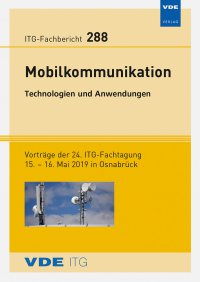Monopulse-based THz Beam Tracking for Indoor Virtual Reality Applications
Conference: Mobilkommunikation – Technologien und Anwendungen - 24. ITG-Fachtagung
05/15/2019 - 05/16/2019 at Osnabrück, Deutschland
Proceedings: Mobilkommunikation – Technologien und Anwendungen
Pages: 4Language: englishTyp: PDF
Personal VDE Members are entitled to a 10% discount on this title
Authors:
Tiwari, Krishan Kumar; Sark, Vladica (IHP - Leibniz-Institut für innovative Mikroelektronik, 15236 Frankfurt (Oder), Germany)
Grass, Eckhard (IHP - Leibniz-Institut für innovative Mikroelektronik, 15236 Frankfurt (Oder), Germany & Humboldt-Universität zu Berlin, 10099, Berlin, Germany)
Kraemer, Rolf (IHP - Leibniz-Institut für innovative Mikroelektronik, 15236 Frankfurt (Oder), Germany & Brandenburg University of Technology Cottbus-Senftenberg, 03046 Cottbus, Germany)
Abstract:
Terahertz spectrum is being researched upon to provide ultra-high throughput radio links for indoor applications e.g. virtual reality (VR), etc. as well as outdoor applications e.g. backhaul links, etc. This paper investigates a monopulse-based beam tracking approach for limited mobility users relying on sparse massive multiple input multiple output (MIMO) wireless channels. Owing to the sparsity, beamforming is realized using digitally-controlled radio frequency (RF) / inter-mediate-frequency (IF) phase shifters with constant amplitude constraint for transmit power compliance. A monopulse-based beam tracking technique, using received signal strength indication (RSSI) is adopted to avoid feedback overheads for obvious reasons of efficacy and resource savings. The Matlab implementation of the beam tracking algorithm is also reported. This Matlab implementation has been kept as general purpose as possible using functions wherein the channel, beamforming codebooks, monopulse comparator, etc. can easily be updated for specific requirements and with minimum code amendments.


